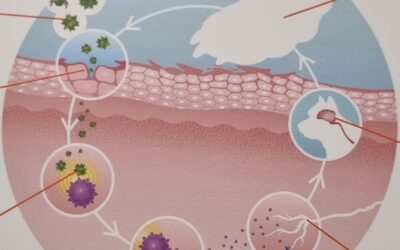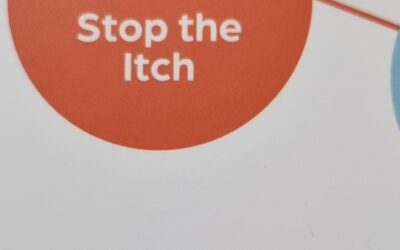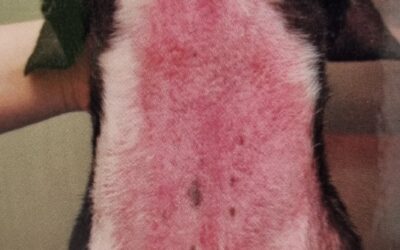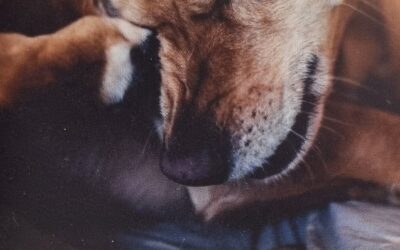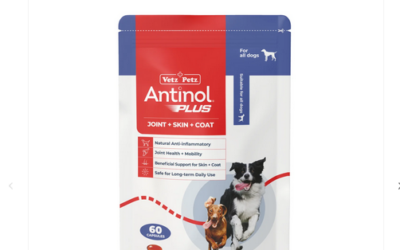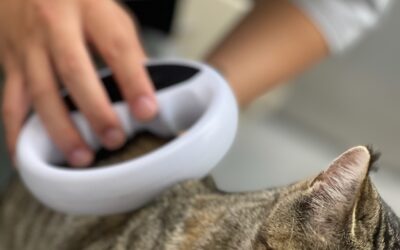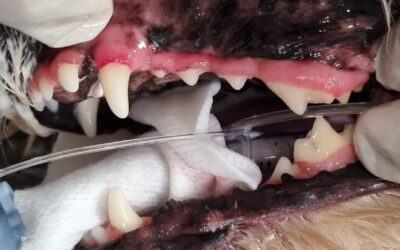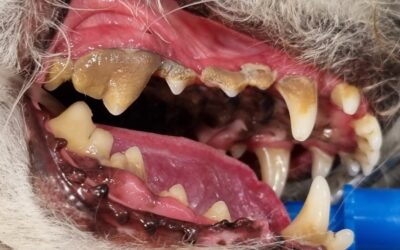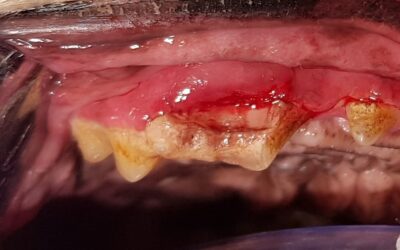Pet Care Advice
The Itch Scratch Cycle of Canine Allergic Dermatitis
Allergic Dermatitis can be a life long condition, but with the right approach we can find a source of comfort that gives your pet fast and lasting Relief. THE CANINE ITCH CYCLE 1. Allergens in the Environment (pollen, grass) 2. Allergens enter the body by...
Treating Atopic Dermatitis
Diagnosis Generally a thorough history and physical examination can provide a lot of information. In some cases further testing may be warranted to detected underlying skin or ear infections. May also find out about your pets parasite control for flea, ticks and...
Common Causes and symptoms of Atopic Dermatitis
Allergic dermatitis, also known as Atopic Dermatitis refers to inflammation of the skin which is often triggered by environmental allergens. An allergen is a substance which may cause an allergic reaction such as grasses and pollen. Atopic dermatitis has a similar...
How Itchy is your dog?
Synovan
Synovan is a concentrated anti-inflammatory and stimulant of cartilage synthesis, repair and protection for treating joint disease in dogs. It is a class of disease modifying agents which help reduce pain and slows down degenerative joint disease.It is best used in...
Antinol Plus
Support Your Pet’s Joint + Skin + Coat Health—Naturally. Antinol® Plus is a powerful, all-natural supplement designed to enhance your pet's joint + skin + coat health. Each tiny softgel is crafted from a patented blend of marine lipid oils, clinically proven to...
MICROCHIP ALERT
Important Notice: Cessation of HomeSafeID’s Animal Registry Service We have been alerted by Animal Welfare Victoria (AWV) to advise that HomeSafeID is no longer licensed under the Victorian Domestic Animals Act 1994 to provide an animal registry service (microchip...
Stages of Dental Disease
STAGE 1: Dental Plaque Build Mild Tartar and Plaque Build up No gum damage or gingivitis Healthy Teeth Reversible Changes Home Dental Care options will help Will progress to Grade 2 dental disease in time if not managed early. STAGE 2 DENTAL DISEASE Moderate Tartar...
Common Queries and concerns regarding dental disease
Many owners have questions and concerns surrounding dental disease and how to provide the best dental care for their beloved pets. 1. Will home dental care will prevent my pet needing veterinary dental treatment? We recommend early, regular home dental hygiene...
Tooth Damage and Decay
Quite often teeth can become damaged and broken. In the image above the Carnassial tooth in this patient had developed a crack leading to a slab fracture of the outer part of the tooth. The tooth root had become infected, along with the surrounding gum Slab fractures...
Contact Us
(03) 9560 6966
Mon-Fri 8am-7pm, Sat 8.30am-3:00pm, Sun/Public Holidays Closed.
admin@brandonparkvet.com.au
Business Hours
Send us a message!
All fields marked with an asterisk (*) are required.
